La mandoline, tout comme le violon dont elle a souvent le même accord et le même diapason, est un instrument typiquement italien, et, tout comme le violon, elle obéit à des spécificités régionales à la manière des « AOC »…
Par Daniel et Françoise Sinier de Ridder, luthiers et experts
Ce n’est qu’après les années 1760 que la mandoline napolitaine devient le modèle référent. Avant cette époque, on ne peut pas parler de mandolines mais de mandores, sortes de petits luths déclinés en diverses tailles. A cette époque Naples est déjà connue pour sa lutherie et propose un modèle de guitare très particulier les « guitares battentes » : guitares à fond souvent bombé, tables pliées, doubles (ou triples) cordes métalliques attachées à la brague (bas de l’instrument), et chevalet mobile. Ces instruments sont très populaires et se répandent dans tout le reste de l’Italie. Naples devient durant le 3e tiers du 18e siècle l’un des plus importants centres de lutherie populaire (par opposition à Crémone qui devient un centre de lutherie « savante »), tant en quatuor qu’en cordes pinçées. On compte alors des dizaines d’ateliers de lutherie.
La mandoline, obéissant aux mêmes règles que la guitare battente, devient l’instrument « à la mode » fabriqué par des luthiers spécialisés, les Fabricatore, Filano, puis les Calace, Stridente ou les Manfredi, mais, bien sûr, les plus connus d’entre eux la famille Vinaccia. Cette dynastie de luthiers spécialisés dans les instruments à cordes pinçées, guitares et mandolines va produire entre les années 1770 et 1930 des milliers de mandolines et de guitares napolitaines. La mandoline et son répertoire classique et populaire restent très vivant en Italie mais aussi dans le reste du monde, et au début du 20e siècle les orchestres à plectres vont se développer un peu partout, jusqu’au lointain Japon. La mandoline, tout comme le violon, se décline en plusieurs tailles : le piccolo le plus petit diapason, la mandoline accordée comme le violon, la mandole correspondant à l’alto, et le mandoloncelle accordé comme un violoncelle.
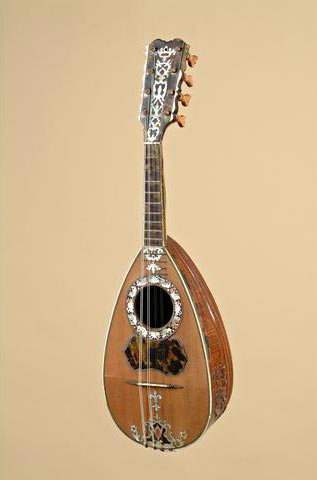
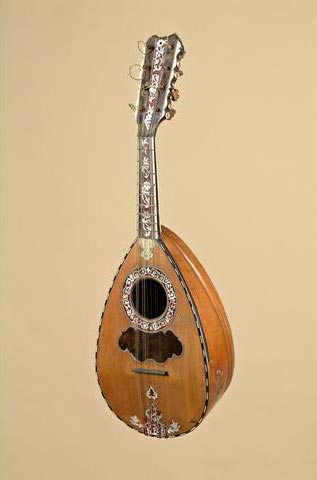
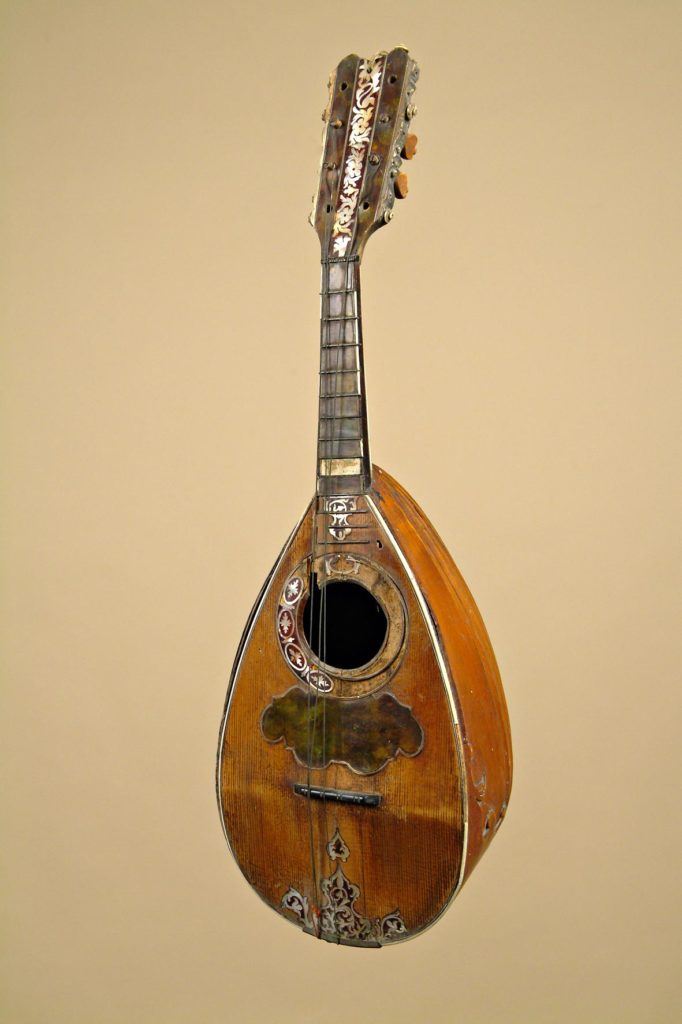
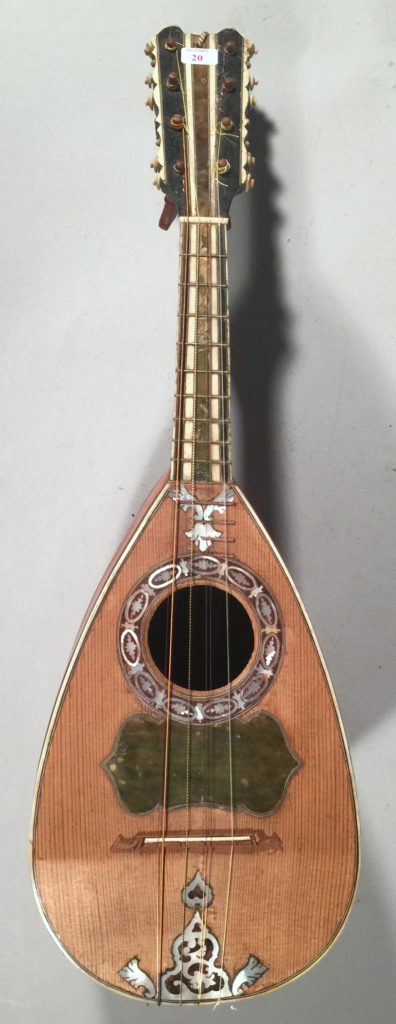
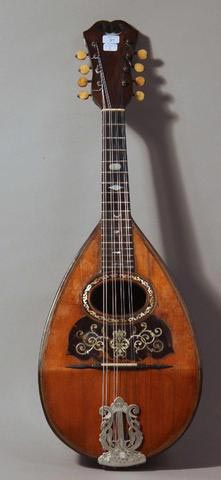
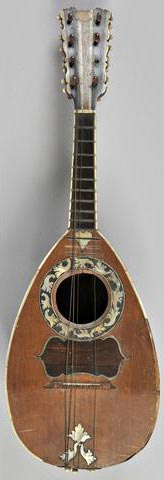
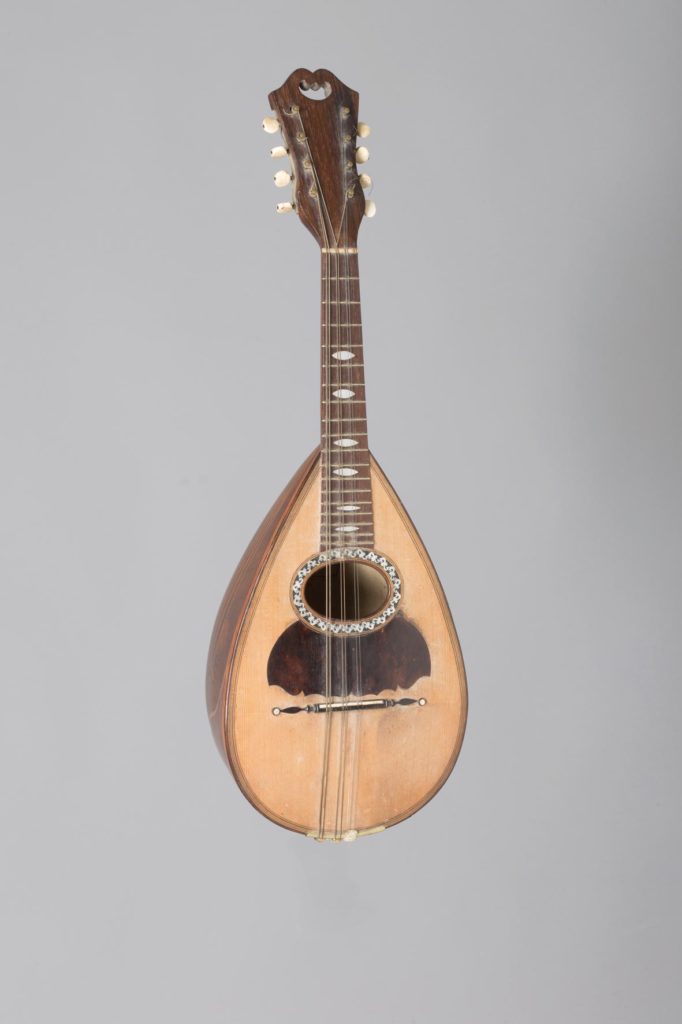
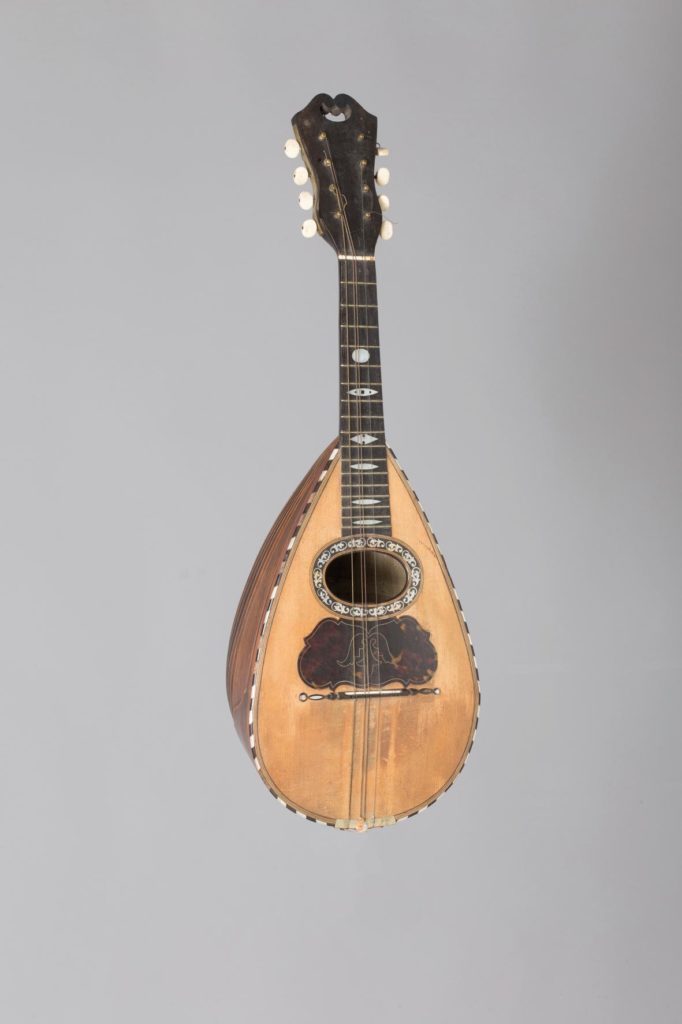
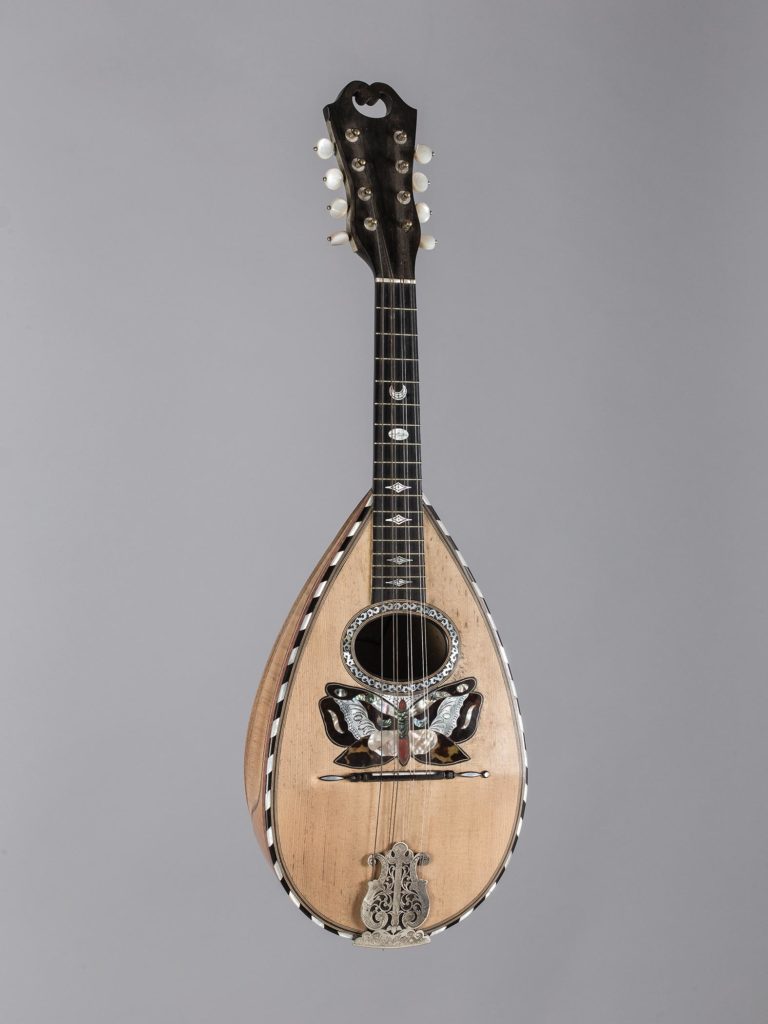
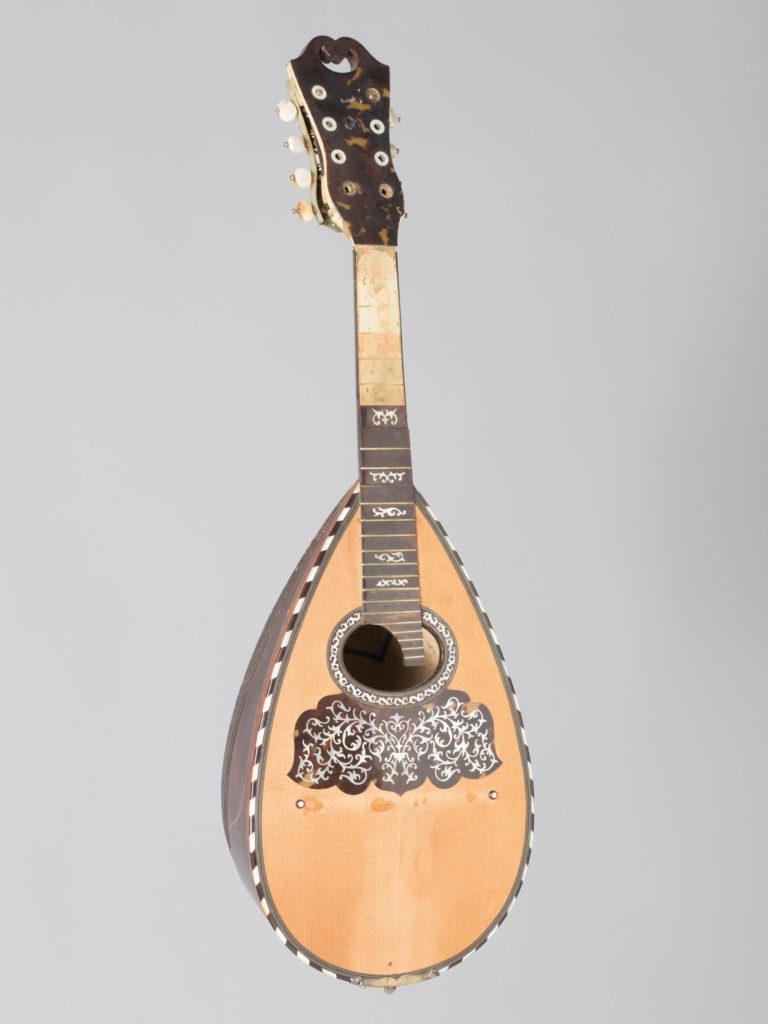
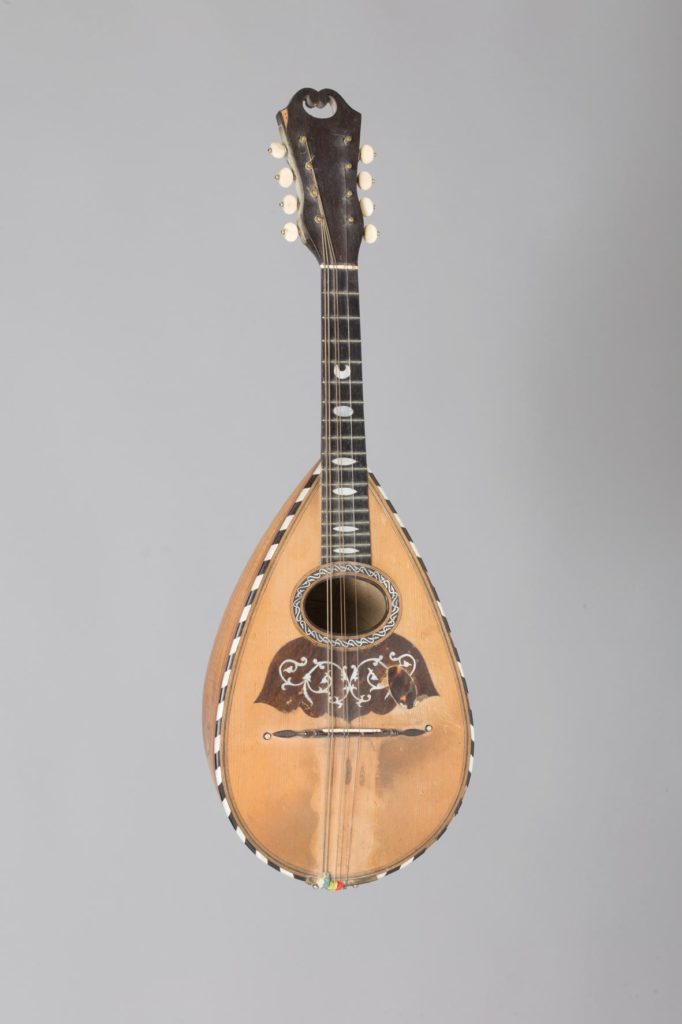
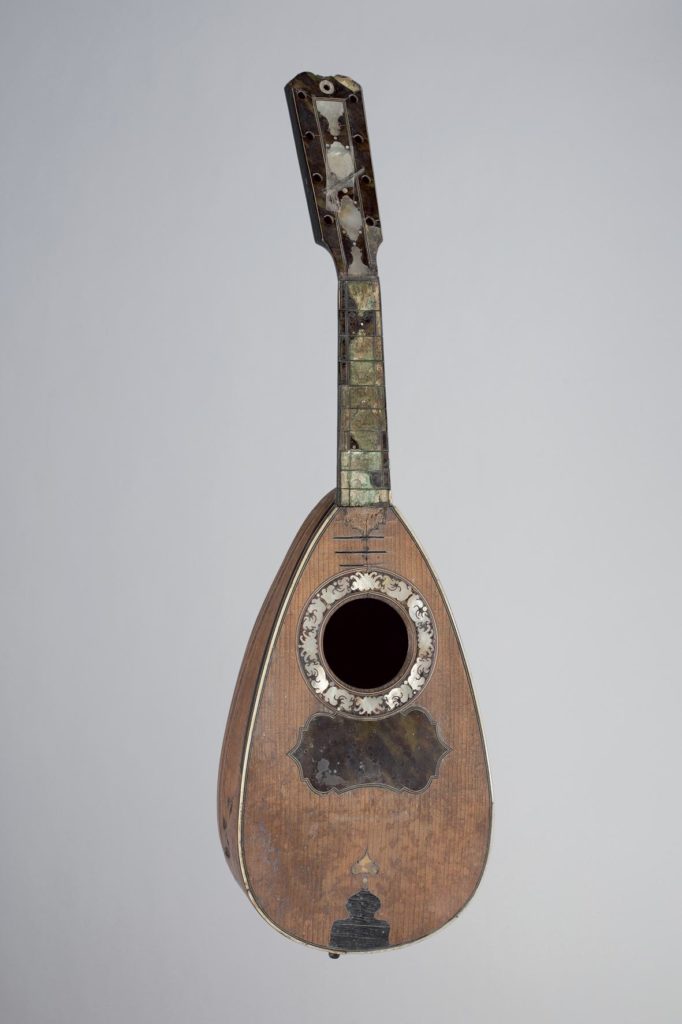
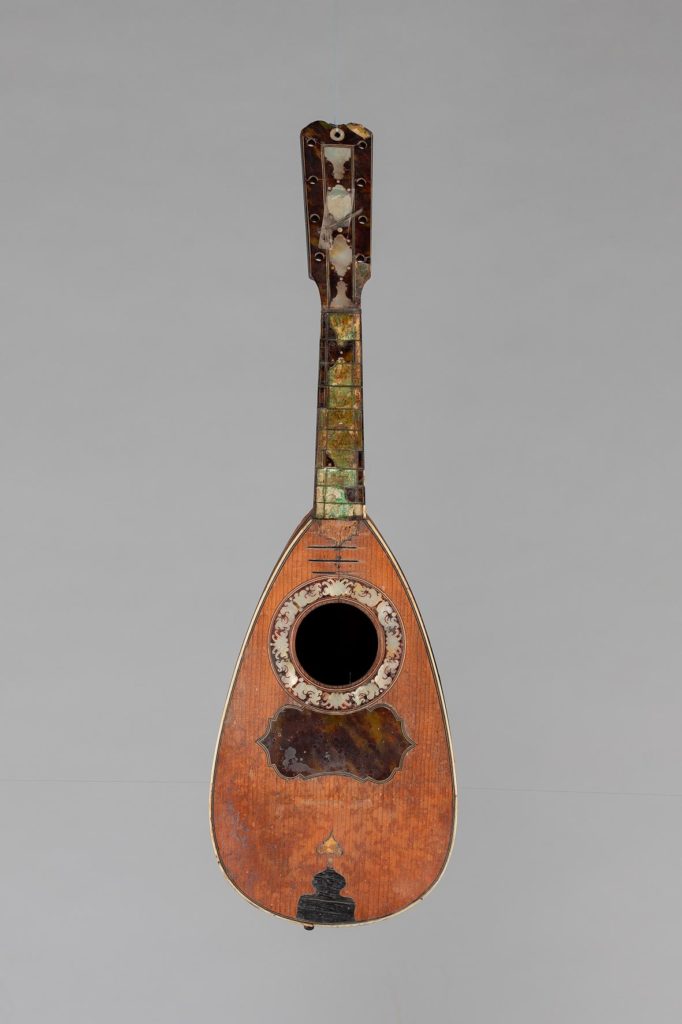
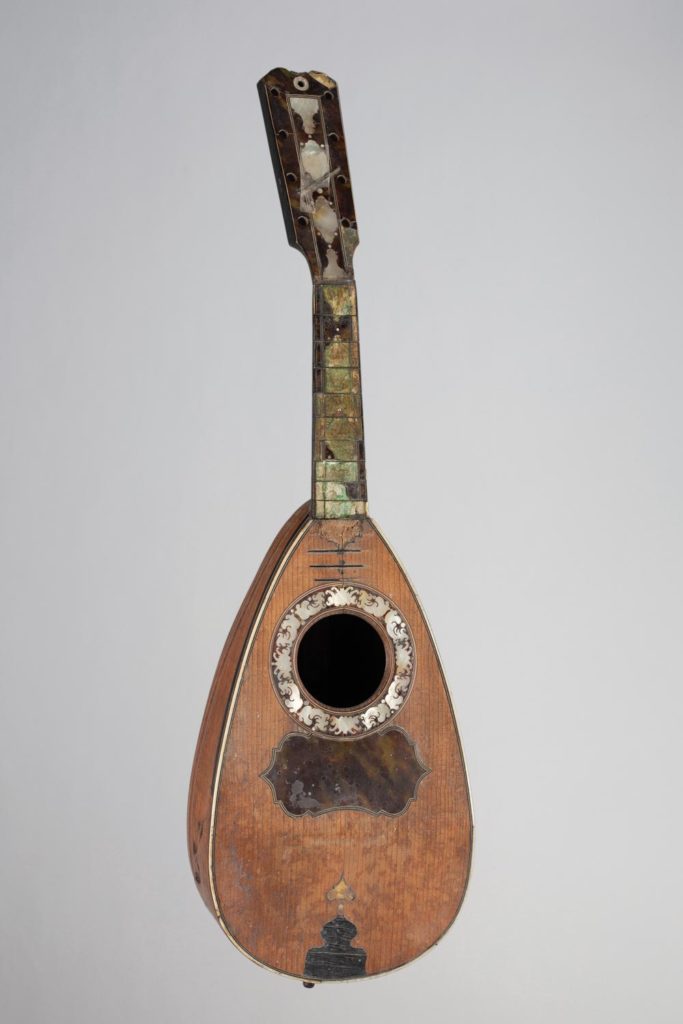
La mandoline napolitaine va occulter les autres types de mandolines pourtant riches d’auteurs prestigieux, de formats et de techniques variées.
Rome et sa région, dont Embergher est vers 1900 le plus illustre représentant, est encore aujourd’hui la référence pour les luthiers contemporains. Brescia et Crémone dont les célèbres luthiers, à l’instar de Stradivarius, ont également fabriqué dès la fin du XVIIe siècle des mandolines d’un format plus allongé et à 4 cordes simples.
Gênes et ses magnifiques instruments, Turin et Milan qui ont vu leurs luthiers produire des mandolines parfois assez semblables à celles de Crémone, Presbler par exemple, mais aussi un modèle très atypique, plus rond, à table plate et chevalet collé pour 6 cordes en boyau nouées, et enfin Catagne en Sicile et sa production massive de qualité.
La mandoline a offert au cours des siècles une diversité importante de patrons et de sonorités, et les régions italiennes, même après la « Réunification » de Garibaldi en 1861, ont su conserver leurs personnalités et leurs qualités propres.
The mandolin, like the violin with which it often shares its tuning and pitch, is a typically Italian instrument, and, like the violin, its form varies from region to region, in the manner of the French AOC.
By Daniel and Françoise Sinier de Ridder, guitar makers and experts
The Neapolitan mandolin only became the reference model after the 1760s. Before that, it took the form of mandores, a type of small lute available in various sizes. At that time, Naples was already known for its guitar making and produced a very particular model of guitar, the « chitarra battente »: they often had rounded backs, folded tops, double (or triple) metal strings attached to a saddle at the bottom of the instrument, and a moveable bridge. These instruments were very popular and spread throughout the rest of Italy. In the latter part of the 18th century, Naples became one of the most important centres of popular instrument making (as opposed to Cremona which became a centre of “learned” instrument making), for both bowed and plucked string instruments. There were then dozens of instrument making workshops.
The mandolin, which followed the same principles as the chitarra battente, became the instrument in fashion and was made by specialized makers, such as the Fabricatores and the Filanos, and then the Calaces, Stridentes and Manfredis, but, of course, the best known amongst them were the Vinaccia family. This dynasty of makers specializing in plucked string instruments, such as guitars and mandolins, produced thousands of Neapolitan mandolins and guitars between the 1770s and 1930s. The mandolin and its classical and popular repertoire remain very much alive in Italy, but also in the rest of the world, and at the beginning of the 20th century plectrum orchestras formed everywhere, as far away as Japan. The mandolin, like the violin, comes in several sizes: the piccolo has the smallest pitch; the mandolin is tuned like the violin; the mandola corresponds to the viola; and the mandoloncello is tuned like a cello.














The Neapolitan mandolin overshadowed the other types of mandolins, despite prestigious composers writing for these instruments, and their varied forms and playing techniques.
Rome and its region, of which Embergher was the most illustrious representative around 1900, is still today the benchmark for contemporary makers. From the end of the 17th century, the famous violin makers of Brescia and Cremona, such as Stradivari, also produced mandolins of longer form and with four single strings.
Other centres of production include Genoa and its magnificent instruments, Turin and Milan, where makers, including Presbler for instance, sometimes produced mandolins quite similar to those of Cremona, but also a very atypical model, rounder, with a flat top and a glued bridge for six knotted gut strings, and finally Catania in Sicily with its good quality mass production.
The mandolin has taken different forms over the centuries, producing a variety of tones, and the Italian regions, even after Garibaldi’s « Reunification » in 1861, have managed to retain their unique personality and quality in the manufacture of the instrument.